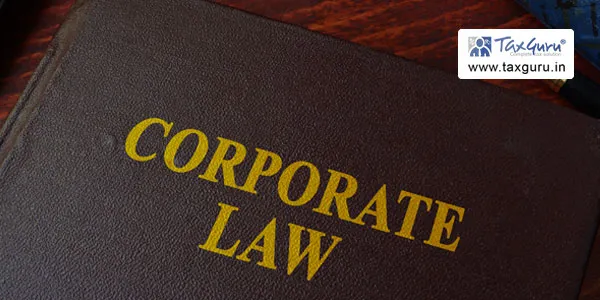Navigate the process of trademark registration in India with our comprehensive guide. Learn about types, required documents, and the step-by-step procedure. Consult experts for effective protection of your intellectual property.
In today’s competitive world, trademarks play a vital role in distinguishing your property from your competitors. They serve as a valuable form of intellectual property, providing exclusive ownership and protection for registered owners. Understanding the process of trademark registration is crucial for securing your rights and availing legal remedies when needed.
Under the Trademark Act of 1999 in India, individuals and businesses are granted the opportunity to register their trademarks. This registration offers a range of benefits, including exclusive ownership, legal protection, and the ability to seek remedies in case of infringement.
The process of trademark registration involves several essential steps, which may vary slightly depending on the country or jurisdiction you are applying in. Here is a breakdown of the general steps involved:
1. Trademark Search: Before filing the trademark application it is advisable to conduct a comprehensive search.
2. Filing of trademark application. You need to prepare the necessary documents, including the application form Filing the Application: Once you have determined that your trademark is available, you can proceed with filing, a clear representation of your trademark, and the list of goods or services the trademark will cover
3. Application Review: After submitting your application, the trademark office will review it to ensure that it meets all the requirements. This includes examining the trademark for distinctiveness, checking for any conflicting marks, and verifying that the application is complete
4. Publication or Examination: In some jurisdictions, the trademark application is published for a specific period to allow interested parties to oppose the registration. Alternatively, the application may undergo an examination by the trademark office to determine its registrability.
5. Opposition Period: If your application is published, there is usually a specific period during which third parties can oppose your trademark registration. If there are no oppositions or if they are successfully resolved, the process moves forward.
6. Registration and Issuance: Once your application is approved, and there are no further oppositions or objections, your trademark will be registered, and a registration certificate will be issued. The certificate confirms your exclusive rights to use the trademark for the specified goods or services

It’s important to note that the timeline for trademark registration can vary significantly. It may take several months to several years, depending on the jurisdiction and any complications that may arise during the process. Additionally, it’s often beneficial to seek the assistance of a trademark attorney or agent who can guide you through the application process and handle any legal complexities on your behalf.
Types of Trademark Registration
1. Ordinary Trademark Application: This is the most common type of trademark registration in India. It provides protection for goods or services falling under one or more classes of the Nice Classification.
2. Collective Trademark: A collective trademark is used by a group of individuals, such as an association, cooperative society, or organization, to indicate a common origin or characteristic of the goods or services.
3. Certification Trademark: A certification trademark is used by the owner to certify certain characteristics, quality, accuracy, origin, or other specific features of goods or services.
4. Well-Known Trademark: Well-known trademarks enjoy a higher level of protection in India. These trademarks have acquired significant reputation and recognition among the public in India.
5. Series Trademark: A series trademark is a set of related trademarks that share a common element. It allows the registration of multiple trademarks under a single application.
6. Shape Trademark: Shape trademarks protect the unique shape or configuration of goods or packaging. Examples include the Coca-Cola bottle shape or the Toblerone chocolate bar shape.
7. Sound Trademark: Sound trademarks protect distinctive sounds associated with goods or services. For example, the MGM lion’s roar or the Nokia ringtone
8. Scent Trademark: Scent trademarks protect unique fragrances associated with products or services. This type of trademark registration is relatively new in India.
9. Color Trademark: Color trademarks protect specific colors or combinations of colors used to identify goods or services. Examples include the purple color for Cadbury chocolate packaging or the brown color for UPS delivery Trucks.
10. Motion Trademark: Motion trademarks protect moving images or animations that are used to distinguish goods or services.
Documents required for registration of trademark online
1. Applicant’s Details: The name, address, and nationality of the trademark applicant
2. Trademark Image: A clear representation of the trademark in JPEG format. It should be provided in the size and dimensions specified by the Trademark Registry
3. Description of Goods/Services: A comprehensive description of the goods or services associated with the trademark. The goods/services should be classified according to the appropriate class(es) of the Nice classification.
4. Power of Attorney: If the application is filed through an agent or attorney, a signed Power of Attorney document authorizing them to act on behalf of the applicant is required.
5. Priority Claim: If the applicant claims priority based on an earlier application filed in a convention country, details such as the application number, filing date,
6. User Affidavit/Declaration: In some cases, a user affidavit or a declaration of intent to use the trademark in India may be required. This is applicable when the trademark is not yet in use but the applicant intends to use it in the future.
Process of registration of trademark
To initiate the registration process, visit the official website of the trademark office for your jurisdiction. Login using your provided credentials and file the TM-A form. Attach all the required documents and submit the application along with the requisite fee.
Remember, obtaining a registered trademark can provide significant advantages in protecting your brand identity and establishing exclusivity in the marketplace. By following the appropriate steps and seeking professional guidance, you can unlock the power of trademarks and safeguard your intellectual property rights effectively.
*****
This article is written by Ms. Shivangi Sharma and Anupama Tripathi of Team Anupama Tripathi & Associates for the purpose of comment and knowledge, for more information you can connect with us#8800839633 or mail us #csanupamatripathi121@gmail.com




















